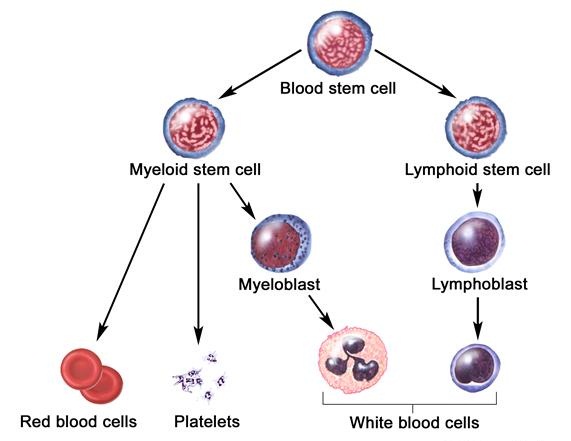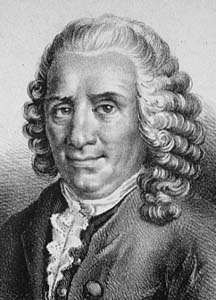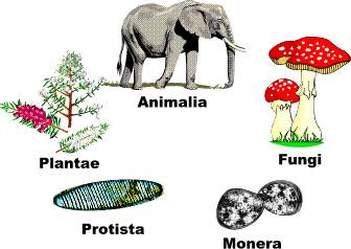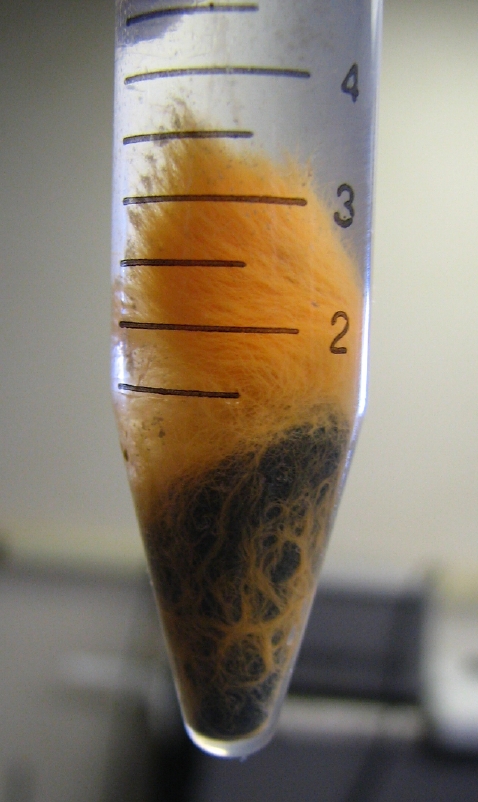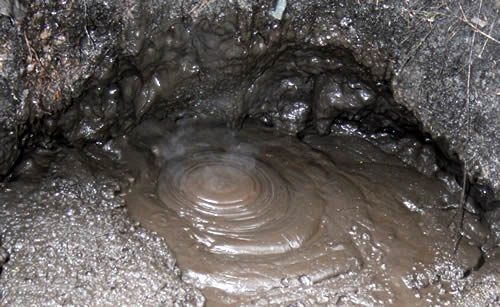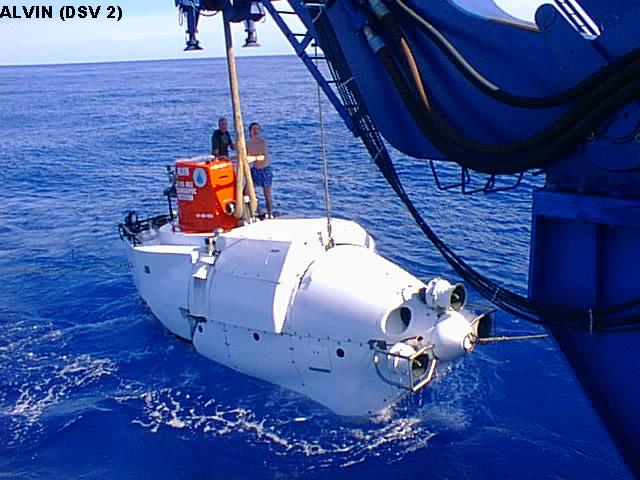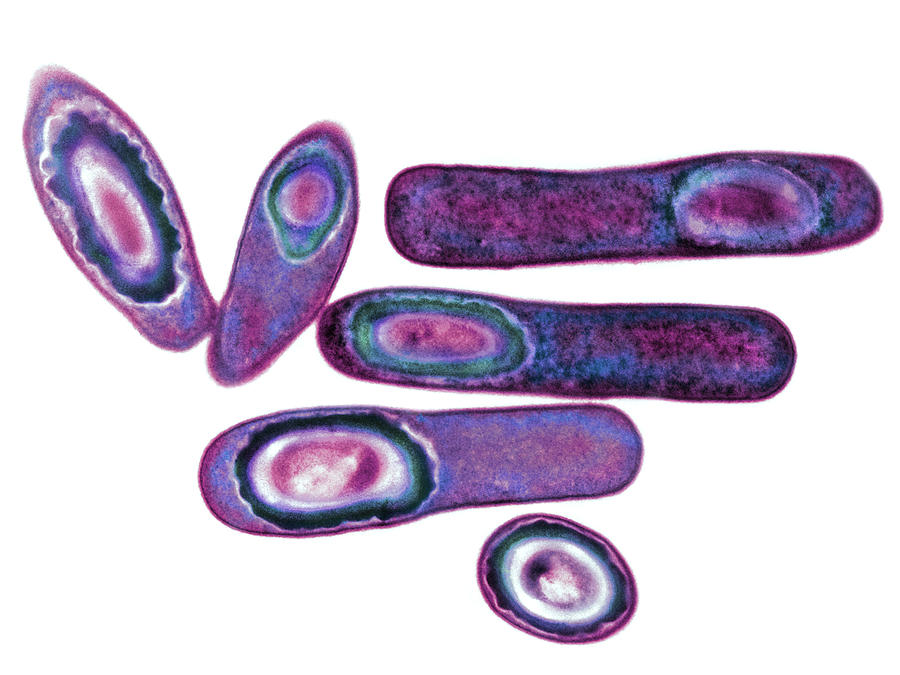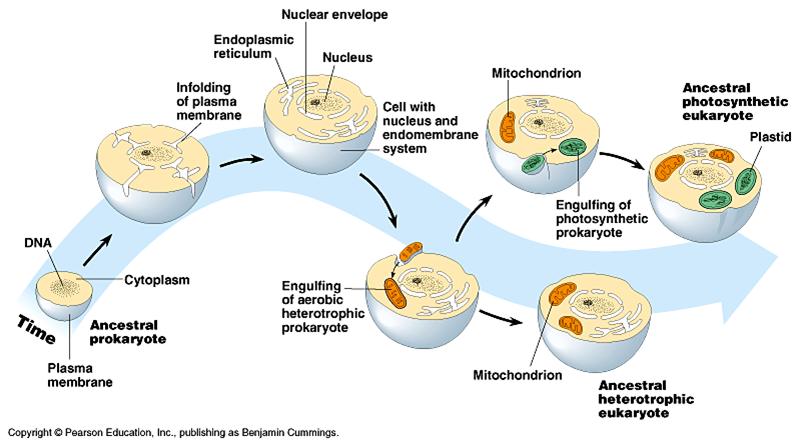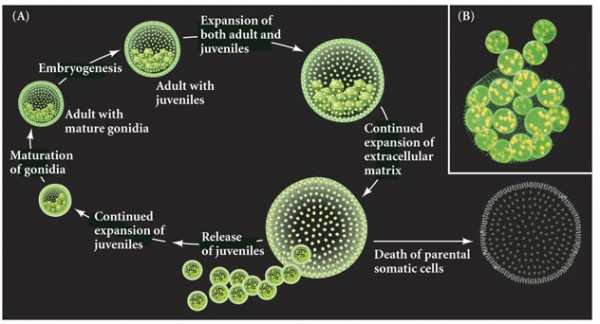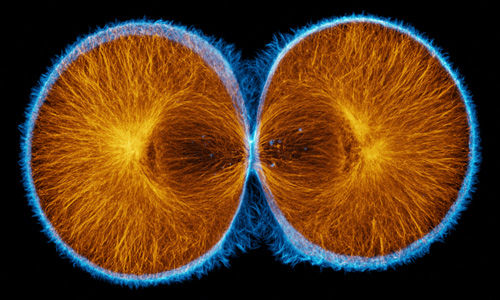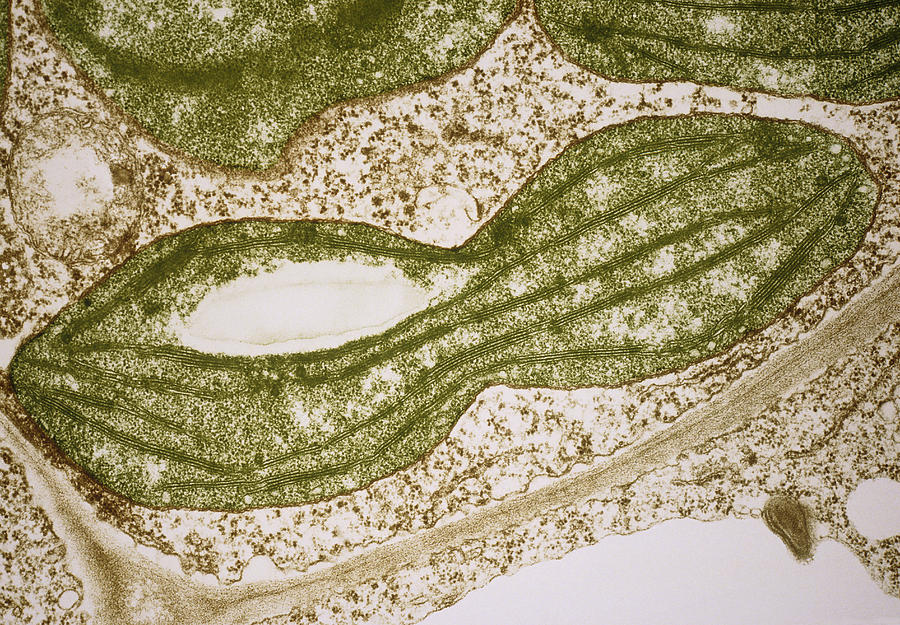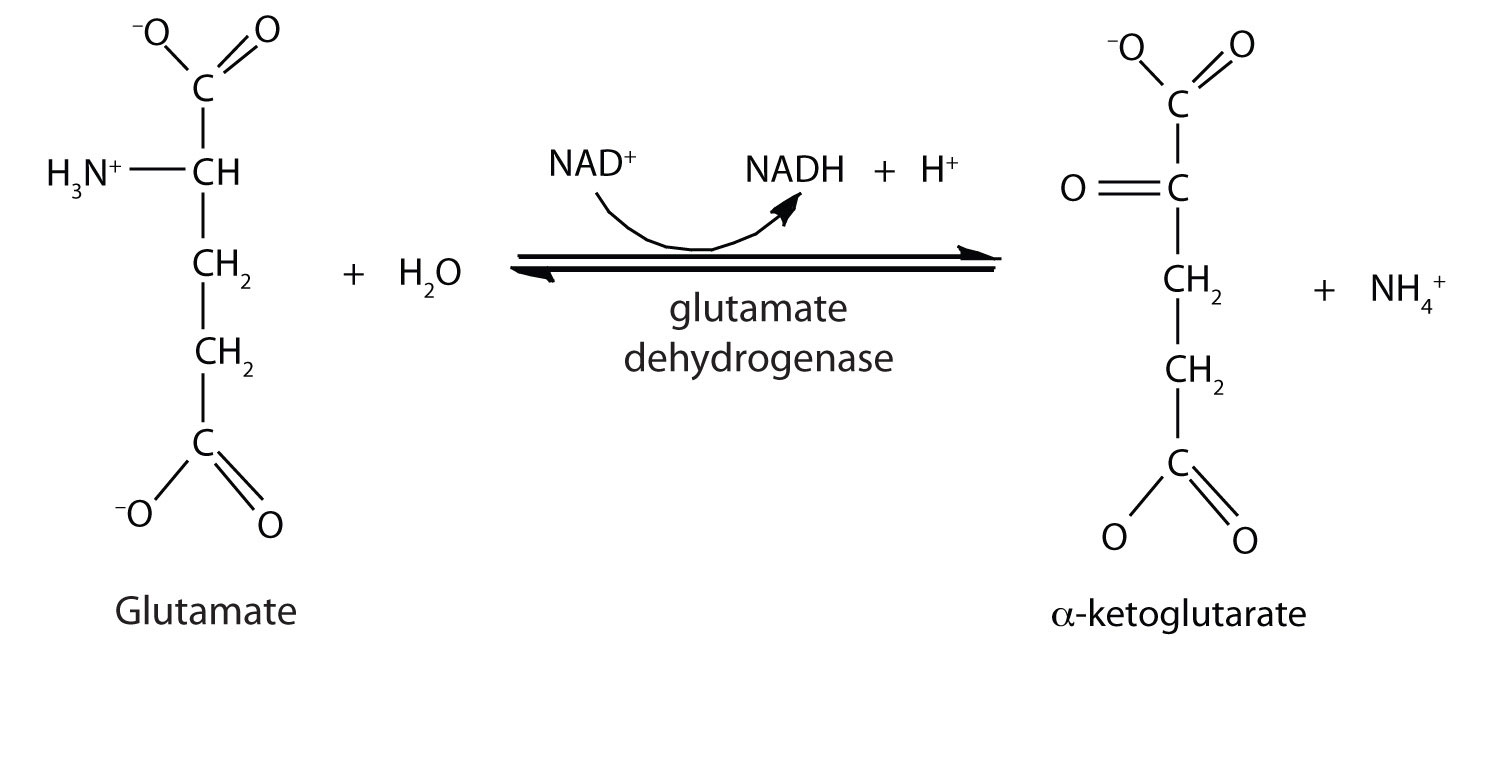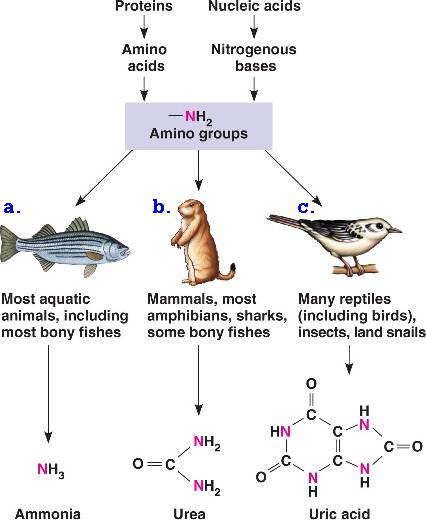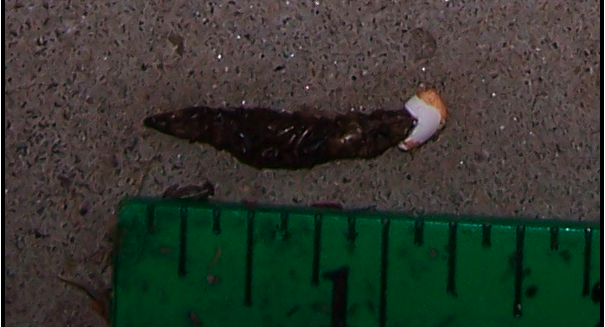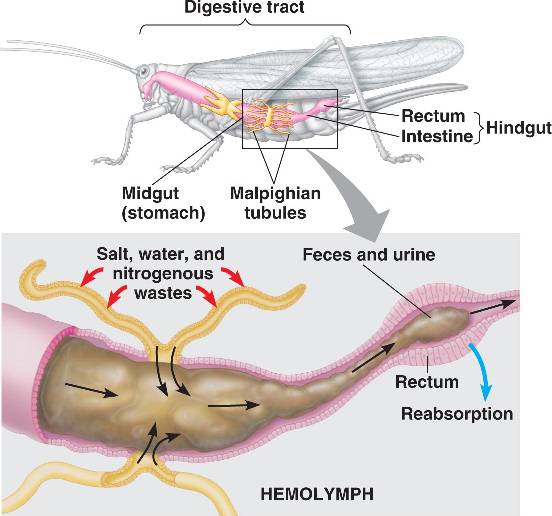This section is the last of the topic "Patterns in Nature". Cell division is very important for organisms. Certain cells quite literally wear out, others are damaged by the environment and others can be damaged or killed by some type of trauma.
In addition, organism growth is a result of cell division, not cell growth. Remember what happens to cells when they get larger?
And finally, not all cells will divide for your entire life. For example, nerve cells tend to stop dividing completely by about the age of twelve in humans. This is why injuries involving nerves, the spine or the brain are often lifelong.
The type of cell division we are looking at in some detail is mitosis. There are 2 important stages in cell division:
- Division of the DNA
- Division of the cytoplasm.
Starting with the DNA, when we see the nucleus, the DNA is essentially unwound so that the cell can use it for instructions for various cell processes and products. It is a bit like the wool in the left hand picture here. If we were to divide this up, chances are there would be large amounts of DNA breakage which will result in the cells being not viable. To prevent this, the cell winds up the DNA (the process is called condensation) so that they form the visible chromosomes. In doing so, they arrange the DNA into structures like similar to those on the right, which is much easier to divide into 2 cells.


Let's run through the stages of mitosis.
- Interphase - This is the longest phase and is the stage where DNA is copied and the cell increases in size. Another feature of anaphase is mitochodria and chloroplasts divide independently of the cells at this stage.
- Prophase - The nucleus begins to condense into visible strands of DNA or chromosomes
- Metaphase - The chromosomes align themselves centre of the cell along the "equator"
- Anaphase - The chromosomes pull apart forming chromatids
- Telophase - The DNA in each daughter cell begins to unwind forming a new nucleus.
 However, division of the nucleus is only one part of cell division. The cytoplasm mus also be equally divided. If its not, then the one of the daughter cells is likely to be non-viable, because there is not enough cytoplasm containing nutrients and organelles for the cell to keep functioning. If that happens, why divide in the first place?
However, division of the nucleus is only one part of cell division. The cytoplasm mus also be equally divided. If its not, then the one of the daughter cells is likely to be non-viable, because there is not enough cytoplasm containing nutrients and organelles for the cell to keep functioning. If that happens, why divide in the first place?
To ensure cytokinesis (division of the cytoplasm) takes place effectively, the cell forms a band of contractile proteins around the equator of the cell. These pinch the cell into two fairly equal parts.
Now you may have read that I said the mitochondria and the chloroplasts divide during interphase. This because they have their own DNA regulating their growth. A possible reason for this is discussed in the next topic called Life on Earth. It is sufficient to know at this stage that not only does the nucleus contain DNA, but so do these organelles.
So where does cell division occur? In flowering plants it occurs in the bud at the end of the stem (called either the terminal bud or apical meristem). Loss if this but causes plants to shoot at lower buds. This is why gardeners will prune plants to encourage bushiness in the lower parts.
Grasses somewhat unusually grow at the base of the stem. This adaptation allows them to survive being grazed by herbivores and fire.
Stem and branch thickening occurs in a layer of tissue between the xylem and phloem of the cell called the cambium layer. More on this in the HSC course.
Roots divide in a zone just behind the root cap. From there they elongate. Between these 2 processes, the roots are able to penetrate into the soil.
Zones of cell division in animals vary. In humans (and probably mammals in general), one of the most active areas of cell division is the bone marrow which produces blood cells. On average, a human turns over about 120 million red blood cells a day. Having said that the blood stem cells have the potential to become not only red cells but platelets and a variety of white cells. That is part of the differentiation process, something mentioned earlier.
However, the stem cells need to divide before differentiating. Mitosis is the solution to this.
